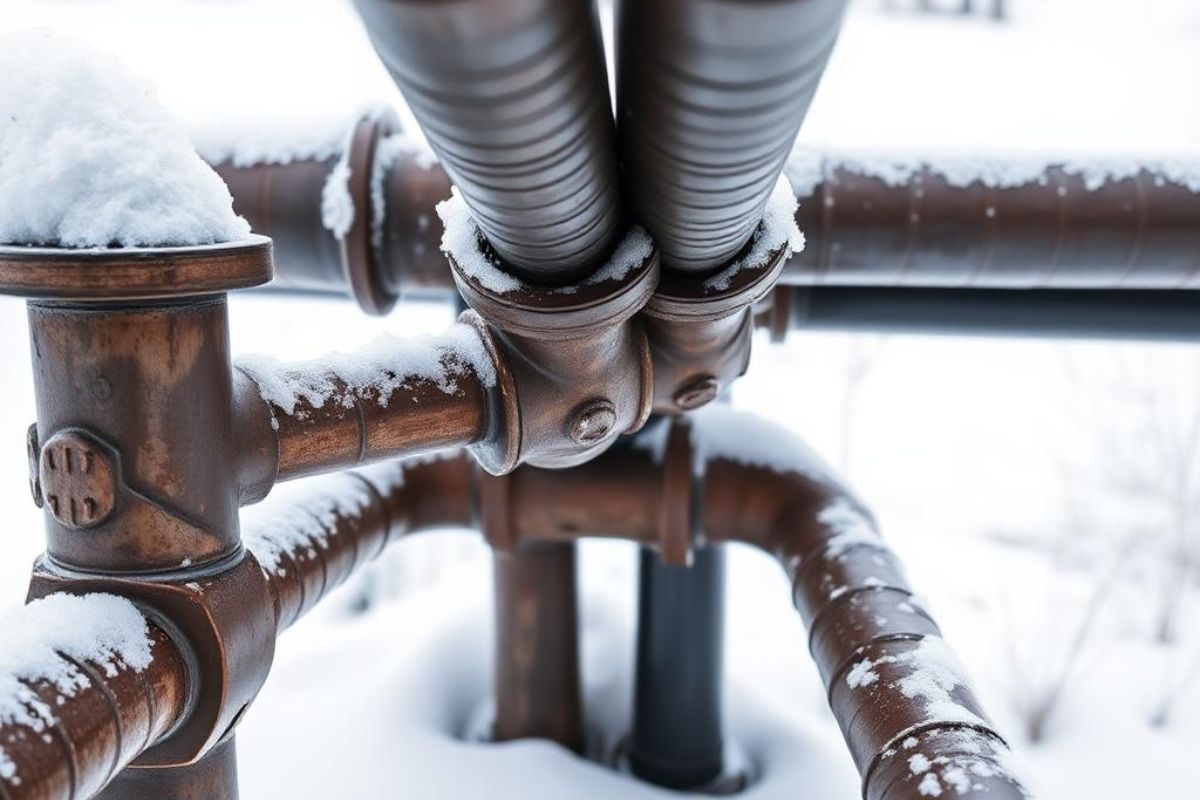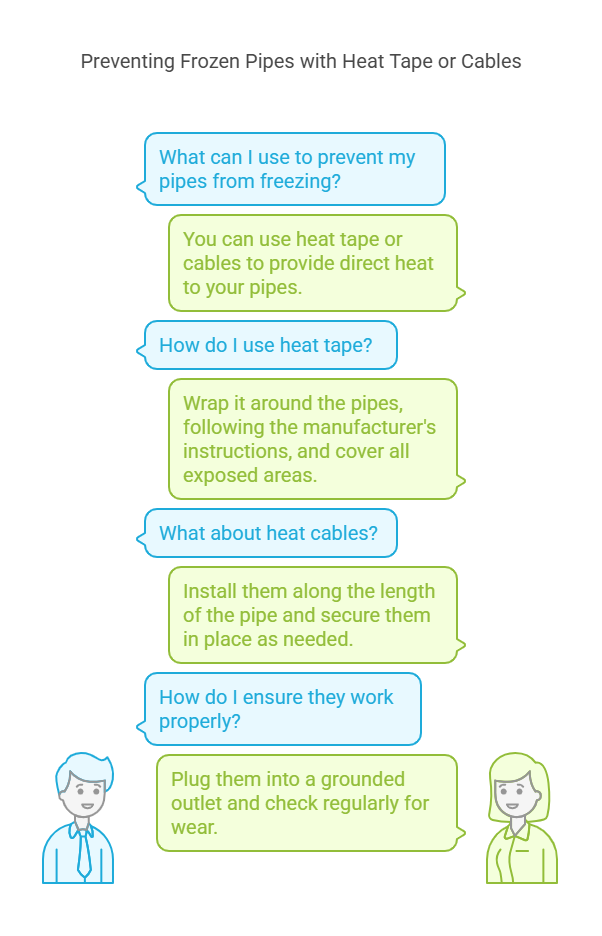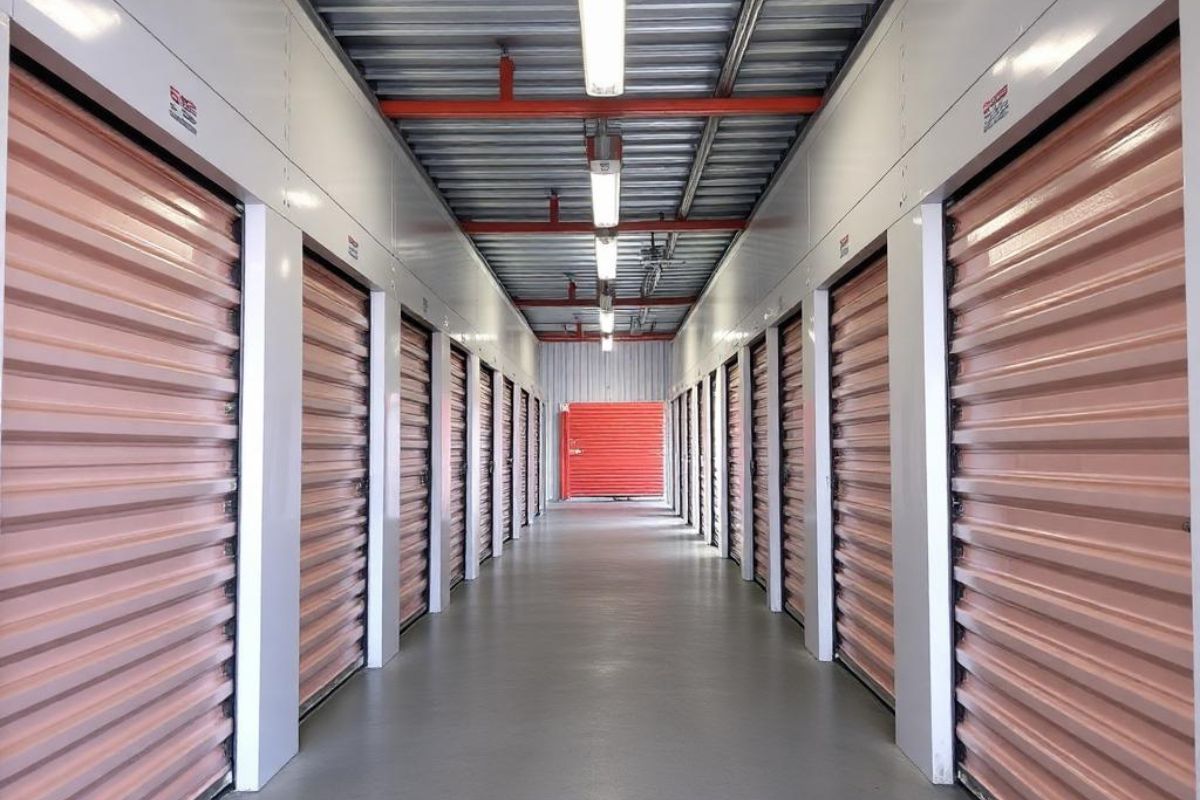How to Prevent Frozen Pipes in Winter

To prevent frozen pipes in winter, start by insulating vulnerable pipes in unheated areas like basements and attics. Keep your indoor temperature above 55°F and avoid drastic drops. Allow faucets, especially those on exterior walls, to drip slightly to keep water moving. Seal any gaps around windows, doors, and pipes to minimize drafts. Use foam insulation or heat tape where needed, and verify your heating system is functional before winter hits. Remember, a little prevention goes a long way. If you want to know more tips for protecting your home, there's plenty of helpful information available.
- Insulate vulnerable pipes in unheated areas using foam sleeves or heat tape to protect against freezing temperatures.
- Maintain indoor temperatures above 55°F (13°C) to prevent pipes from freezing during cold weather.
- Allow faucets to drip slightly to ensure water movement and reduce the risk of ice formation.
- Seal cracks and gaps around pipes and entry points to minimize cold drafts and improve insulation.
- Regularly check heating systems and ensure they are functioning properly before winter to maintain consistent warmth.
Understand the Risks
When temperatures drop, understanding the risks of frozen pipes becomes essential for homeowners. Frozen pipes can lead to serious damage, including burst pipes, flooding, and costly repairs. You need to be aware that pipes located in unheated areas like basements or attics are particularly vulnerable. Additionally, outside walls and areas exposed to cold drafts are high-risk zones too.
The pressure from freezing water can cause pipes to rupture, resulting in significant water loss and structural issues. It's important to monitor your home's temperature, especially during cold snaps. Keep an eye on your water flow; if it slows down or stops, it might indicate a freeze. Taking preventive measures now can save you from headaches later.
Insulate Vulnerable Pipes
To prevent your pipes from freezing, it is essential to insulate those that are most vulnerable. Focus on pipes located in unheated areas, like basements, attics, and crawl spaces. Use foam pipe insulation sleeves or heat tape to wrap these exposed pipes effectively. Make sure to seal any gaps around windows and doors to minimize cold drafts that can affect your plumbing.

Additionally, consider using insulating materials like fiberglass or cellulose for walls and ceilings if you have access. Remember to check for any signs of wear or damage on existing insulation and replace it as needed. Taking these preventative steps now can save you from costly repairs and water damage later. Stay proactive and keep your plumbing safe this winter!
Keep Indoor Temperatures Consistent
Maintaining consistent indoor temperatures is essential in preventing frozen pipes during the colder months. You should aim to keep your home at a steady temperature, ideally above 55°F (13°C), even when you're away. Sudden drops in temperature can stress your plumbing and lead to freezing.
Use your thermostat wisely; don't turn it down too low at night or when you leave for extended periods. Instead, set a schedule that keeps the temperature stable. If you've got areas in your home that are colder, consider using space heaters to maintain warmth.
Regularly check your heating system to make certain it's functioning properly, especially before winter hits. Taking these proactive steps can save you from the hassles and costs associated with frozen pipes.
Allow Faucets to Drip
Allowing faucets to drip during extremely cold weather can be an effective way to prevent your pipes from freezing. When you let water flow, even at a trickle, it keeps the water moving within the pipes, reducing the likelihood of ice formation. You don't need to have every faucet running; focusing on those farthest from the main supply line is best. This method is especially useful for sinks located against exterior walls, where temperatures can drop considerably.
While it may increase your water bill slightly, the cost is minor compared to the expense of repairing burst pipes. Make sure to keep the temperature in your home consistent, and you'll enhance this simple yet effective strategy to safeguard your plumbing.
Open Cabinet Doors
Opening cabinet doors can greatly help in preventing frozen pipes, especially in areas where plumbing runs through exterior walls. By allowing warm air from your home to circulate around the pipes, you reduce the risk of freezing. This is particularly important in kitchens and bathrooms where cabinets often conceal plumbing. During cold spells, it's a good idea to keep these doors open, especially at night when temperatures drop.
If your cabinets have items that could be damaged by cold, consider moving them to a warmer area. You might also want to leave the doors open in any other areas where water supply lines are located. Taking this simple step can make a significant difference in keeping your pipes safe from freezing.
.jpeg)
Seal Cracks and Gaps
To prevent frozen pipes, it is essential to seal any cracks and gaps around your home. Check for openings in areas where pipes run, such as basements, attics, and crawl spaces. Look for gaps around windows, doors, and vents, as these can let cold air in. Use caulk or expanding foam to fill these spaces effectively. Don't forget to inspect areas where utility lines enter your home—these spots can also be vulnerable.
If you notice larger gaps, consider using weather stripping or even hiring a professional for repairs. By taking these steps, you'll create a more insulated environment, reducing the risk of your pipes freezing during the harsh winter months. Taking action now can save you time and money later!
Maintain Heating in Unused Spaces
After sealing cracks and gaps, it's important to keep your home heated, especially in unused spaces like basements and attics. You don't want these areas to become frigid, as it can lead to frozen pipes. Set your thermostat to a minimum of 55°F, even when you're not actively using those rooms. If possible, open doors to these spaces to allow warm air to circulate.
You can also leave cabinet doors open under sinks to let heat reach the plumbing. Insulating the pipes in these areas can provide extra protection against the cold. Regularly check these spaces to guarantee the temperature remains stable, and adjust heating as needed to prevent any freezing issues.
Use Heat Tape or Cables
Using heat tape or cables can be an effective way to prevent your pipes from freezing in particularly cold areas of your home. These products provide direct heat to your pipes, keeping them warm even when temperatures drop considerably. To use heat tape, simply wrap it around the pipes, following the manufacturer's instructions carefully. Make sure to cover all exposed areas, especially those near exterior walls or in unheated spaces.

If you opt for heat cables, install them along the length of the pipe, securing them in place as needed. It's essential to plug them into a grounded outlet and check them regularly for wear. By taking these steps, you can greatly reduce the risk of frozen pipes during winter.
Monitor Outdoor Temperature Alerts
Keeping an eye on outdoor temperature alerts can be a proactive step in preventing frozen pipes. By monitoring these alerts, you can anticipate drops in temperature that might threaten your plumbing. Set up notifications on your smartphone or use a weather app to stay informed. When temperatures approach freezing, consider taking preventive measures, such as letting faucets drip or opening cabinet doors to allow warm air to circulate.
If you're away from home, make arrangements for someone to check on your property during extreme cold spells. Remember, a little diligence can save you from costly repairs and water damage. Stay vigilant and act quickly when those alerts signal a drop in temperature.
Conclusion
By taking these proactive steps, you can greatly reduce the risk of frozen pipes this winter. Insulating vulnerable areas, maintaining consistent indoor temperatures, and allowing faucets to drip are simple yet effective strategies. Don't forget to seal any gaps and keep heating in unused spaces. With a little preparation and vigilance, you'll protect your plumbing and avoid costly damage. Stay warm and dry, and enjoy a worry-free winter season!









